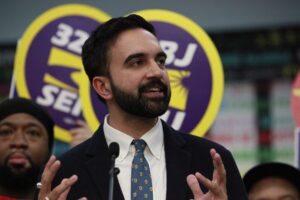State officials and teacher union leaders are expressing outrage following President Donald Trump’s decision to freeze over $6 billion in federal K-12 education funding for the upcoming school year. The move, announced on Tuesday, is expected to exacerbate existing challenges in public schools, which have already faced significant cuts and layoffs earlier this year.
The Trump administration has informed school officials that it will withhold funding typically released on July 1. This funding supports essential services such as reading and math programs, summer and after-school activities, and assistance for migrant students and English learners. California and Texas, the nation’s two largest states, are set to lose the most funding, but the impact will be felt nationwide if the funds are not released soon.
Impact on Schools and Educators
The National Education Association (NEA), the largest labor union for educators in the United States, has warned that schools may have to slash educator salaries or initiate layoffs. Such actions could lead to increased classroom sizes and further destabilize the teaching profession, which is predominantly female. NEA President Becky Pringle described the funding freeze as “outrageous and unconscionable.”
“Withholding billions in promised federal education funding that students need and states had planned to use to support children in their states is a cruel betrayal of students, especially those who rely on critical support services,” Pringle stated.
Pringle accused the Trump administration of a consistent pattern of undermining public education by depriving it of necessary resources, in an effort to promote private and religious schools that are not required to admit vulnerable students, including those with special needs or from marginalized groups.
Legal and Political Ramifications
Randi Weingarten, president of the American Federation of Teachers (AFT), echoed these sentiments, labeling the funding freeze as an “illegal” and ideologically motivated attempt to defund public education. She highlighted that the affected programs are congressionally approved.
“This is another illegal usurpation of the authority of the Congress. Plus, it directly harms the children in our nation,” Weingarten said.
In California, Superintendent of Public Instruction Tony Thurmond estimated that the state is being denied approximately $1 billion. He criticized the administration for failing to provide a legal justification for the freeze, stating that the move punishes children for political reasons. Thurmond indicated that California is prepared to take legal action to ensure the funds are released.
State-Specific Challenges
According to an analysis by the Learning Policy Institute, Texas stands to lose $660.8 million unless the funds are released. This comes as the state grapples with a severe teacher shortage. Programs supporting professional development and recruitment efforts for educators are among those most affected.
“It wasn’t enough for DOGE [the federal Department of Government Efficiency] to cut the Department of Education staff and programming that protect the rights of our most vulnerable students,” said Zeph Capo, president of Texas AFT. “No, Trump had to take hundreds of millions more from Texas schools already struggling amid rising costs and chronic underfunding.”
Capo criticized Texas lawmakers for their silence on the issue, suggesting that their lack of response indicates alignment with Trump’s agenda to undermine public education.
Broader Legislative Context
The funding freeze coincides with the Senate’s recent passage of Trump’s “One Big Beautiful Bill,” which critics argue will further harm children by cutting healthcare and food assistance while providing tax cuts to the wealthy. The bill is now pending a vote in the House.
Weingarten described the legislation as the “big, ugly betrayal of a bill,” stating that it “will kick millions off healthcare and snatch food away from children, all while handing massive tax cuts to Trump’s billionaire friends.”
This development represents a critical juncture for public education in the United States. As states prepare for potential legal battles and educators brace for further challenges, the implications of the funding freeze could resonate for years to come.
As the situation unfolds, education leaders and policymakers will need to navigate these challenges to ensure that public schools can continue to serve all students effectively.




